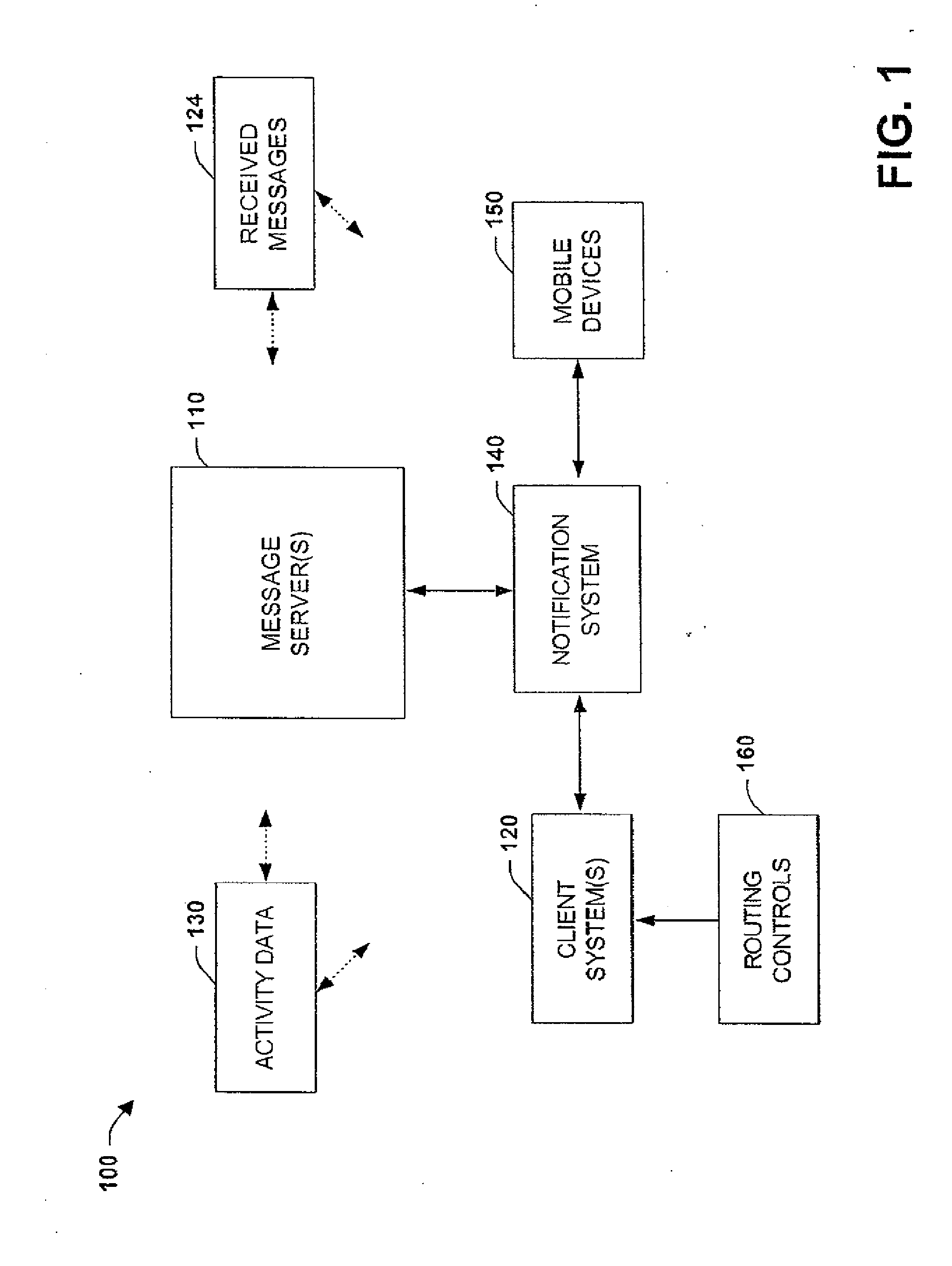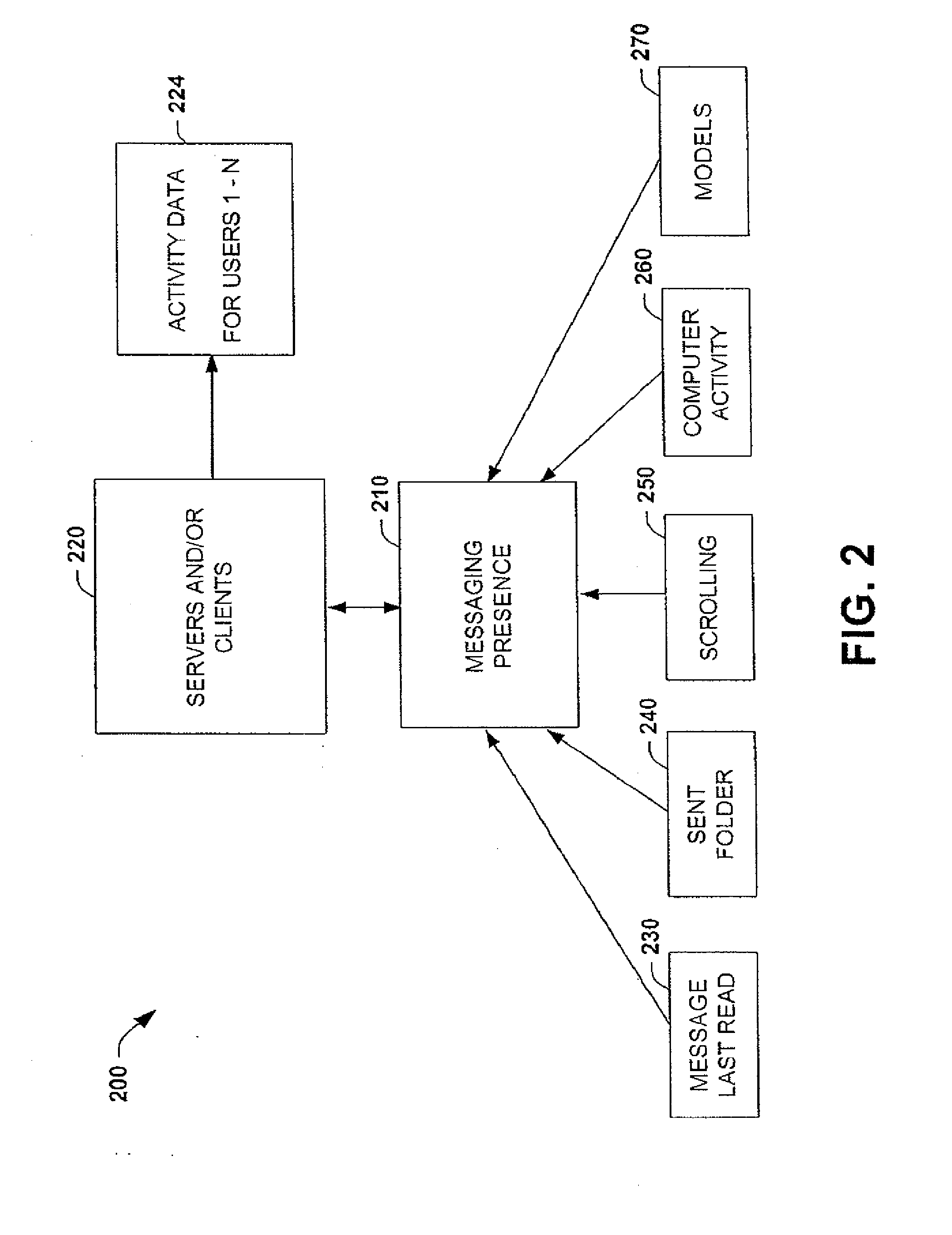Harnessing information about the timing of a user's client-server interactions to enhance messaging and collaboration services
a technology of client-server interaction and information about the timing of user's client-server interaction, which is applied in the direction of data switching networks, program control, instruments, etc., can solve the problem that the desktop computer/prioritization software may not be aware that the user is accessing the e-mail via another device, and achieve the awareness of the presence and communication status of the user. , to achieve the effect of facilitating effective routing and communication of messages, reducing redundancy/duplication,
- Summary
- Abstract
- Description
- Claims
- Application Information
AI Technical Summary
Benefits of technology
Problems solved by technology
Method used
Image
Examples
Embodiment Construction
[0023]The present invention relates to a system and method to facilitate efficient and automated routing of messages. A messaging system such as priorities system or notification system, for example, operates in conjunction with various components that are distributed over multiple machines. An activity component aggregates user presence data from at least one client application and at least one server application, wherein the presence data can be collected for a plurality of users. A routing component operating one or more systems employs the aggregated presence data to deliver one or more messages to at least one of the client application, the server application, and a mobile device, for example.
[0024]In one aspect, the routing component is utilized by at least one of the notification system, the client application, and / or the server application to facilitate delivery of the messages. Also, the routing component can include one or more rules for delivering messages between systems...
PUM
 Login to View More
Login to View More Abstract
Description
Claims
Application Information
 Login to View More
Login to View More - R&D
- Intellectual Property
- Life Sciences
- Materials
- Tech Scout
- Unparalleled Data Quality
- Higher Quality Content
- 60% Fewer Hallucinations
Browse by: Latest US Patents, China's latest patents, Technical Efficacy Thesaurus, Application Domain, Technology Topic, Popular Technical Reports.
© 2025 PatSnap. All rights reserved.Legal|Privacy policy|Modern Slavery Act Transparency Statement|Sitemap|About US| Contact US: help@patsnap.com



